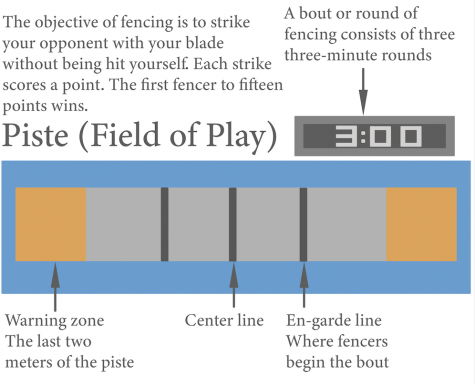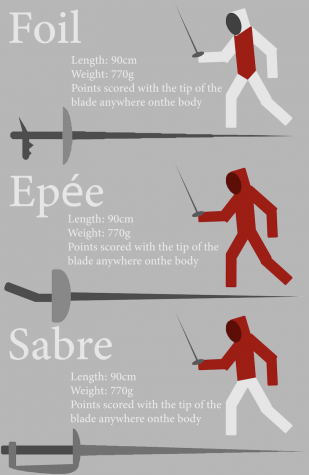Fencing 101: Sharp pointers to understand the sport

History. The origins of fencing as it is known today began in the 14th and 15th century in Germany and Italy. It gained popularity throughout Europe during the 17th and 18th centuries with the development of the foil: a light fencing sword. It was also featured in the first modern Olympics games in 1896. Women’s fencing was introduced to the Olympics in 1924 in Paris. The Fédération Internationale d’Escrime or International Fencing Federation was established in France in 1913. The FIE is recognized as the world governing body of fencing and it establishes the rules to which international competitions must be organized.

Competition. A fencer earns points by striking their opponent with their blade while avoiding being touched. A bout is won when one of the opponents reaches 15 points. Three types of fencing blades are used in competition: foil, sabre and épée. Each event has its own rules and regulations. The foil is the lightest blade. It is rectangular and blunted at the tip. To score a point with a foil, one of the combatants must strike their opponent in the torso with the tip of the blade. The sabre is similar to the foil, but the fencers can also cut with the blade and the scoring area is from the waist to the top of the head. The épée is heavier than the foil, has a triangular blade, and the scoring area is anywhere on the body. A fencing bout takes place on a piste or strip that indicates what is out of bounds. Each bout consists of three three-minute intervals. If neither fencer has reached 15 points when the time has run out, the fencer with the most points wins.

Equipment. Fencers wear protective clothing to shield themselves from their opponent’s blade. This features a mask and bib to protect the fencer’s face, head, and neck. Each event requires a different helmet. The sabre helmet is covered in conductive material because the face is a valid target area. Fencers wear flat shoes reinforced on the sides and back. Fencers also wear a jacket, breeches, gloves and a plastron that protects the side of the sword arm. The fast pace of the sport can sometimes make it difficult to see which combatant struck their opponent first and where, so fencers wear a lamé: an electrically conductive material worn over the target area. The lamé connects to either wired or wireless scoring boxes that record points more accurately.

































































